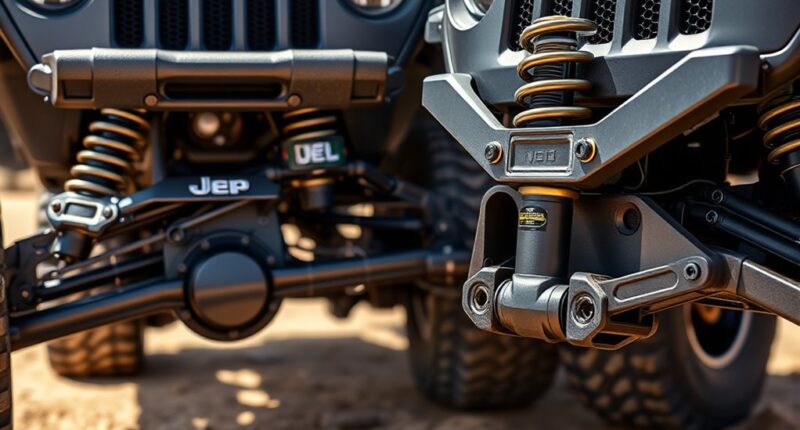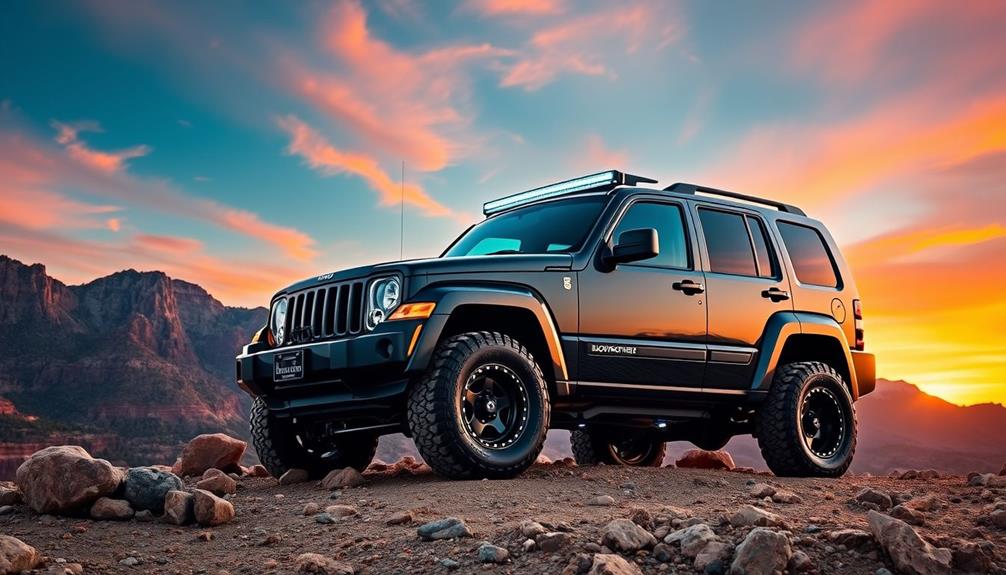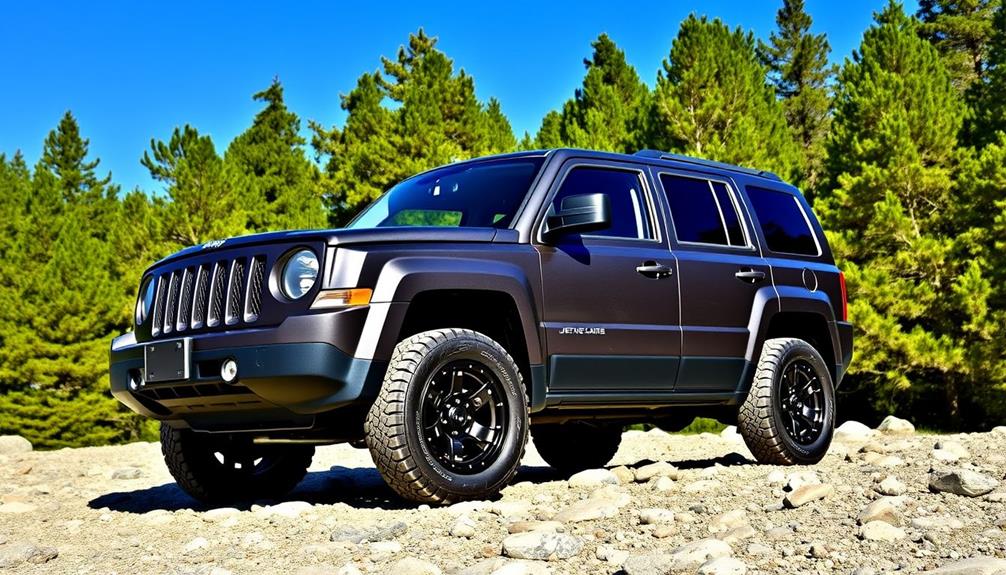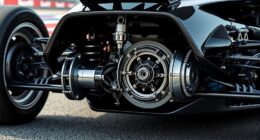When upgrading your steering stabilizer, you’ll find that JL models require more robust, specially designed stabilizers due to their advanced steering systems and larger tires, while JKs often need straightforward upgrades to improve control after lifting. JL stabilizers typically offer better durability and off-road performance, but both benefit from proper wheel alignment and compatibility with lift height. If you’re curious about specific options and how to choose the best for your Jeep, there’s more to discover behind the scene.
Key Takeaways
- JL models generally require more robust, off-road-specific stabilizers due to advanced steering components and higher lift compatibility.
- JK stabilizers are simpler and easier to upgrade, often needing basic replacements for larger tires or lift kits.
- JL stabilizers offer improved durability and damping suited for aggressive off-road conditions compared to JK counterparts.
- Compatibility depends on lift height; JL stabilizers are designed for higher lifts, while JK stabilizers suit moderate modifications.
- Proper wheel alignment is essential for both models to maximize stabilizer effectiveness after upgrades.

Upgrading your steering stabilizer is vital for maintaining control and stability, especially when customizing your Jeep with larger tires or off-road gear. When comparing models for the JK and JL, you’ll want to consider how each handles these upgrades, particularly in terms of lift kits and wheel alignment. The JK and JL have different steering components and suspension setups, which influence the type of stabilizer you’ll need and how well it performs after installation.
Upgrading your steering stabilizer ensures control and stability with larger tires and off-road gear.
If you’ve added a lift kit to your Jeep, it can cause changes in steering geometry, making a quality steering stabilizer more necessary. A lift kit raises your vehicle’s height, which often leads to increased vibrations or wobbling, especially at highway speeds. To combat this, you should choose a stabilizer designed for lifted vehicles, guaranteeing it provides enough damping to absorb shocks and reduce steering play. The JL, with its more advanced suspension system, often benefits from stabilizers that are specifically engineered for higher lifts and off-road use, while the JK might require a more straightforward upgrade.
Wheel alignment plays a key role here. After installing a new steering stabilizer or lift kit, a proper wheel alignment becomes necessary to prevent uneven tire wear and ensure smooth handling. Misaligned wheels can negate the benefits of your stabilizer upgrade by causing steering drift or uneven steering response. Both JK and JL owners should prioritize getting a professional wheel alignment after any suspension modifications, especially if larger tires are involved. This helps guarantee that your steering stabilizer works efficiently, maintaining stability on and off-road.
When upgrading from factory stabilizers to aftermarket options, you’ll notice differences in design and durability. The JK’s steering system is slightly more straightforward, so many aftermarket stabilizers will fit easily, but you still need to verify compatibility with your lift height. The JL, with its more sophisticated steering components, often requires stabilizers that are specifically designed for its newer architecture. These stabilizers tend to be more resilient and provide better damping, especially when handling larger tires and off-road conditions.
Frequently Asked Questions
Are Aftermarket Stabilizers Compatible With Stock Steering Components?
When considering aftermarket stabilizers, you might wonder about mounting compatibility and warranty coverage. Generally, most aftermarket stabilizers are designed to fit standard mounting points, but it’s crucial to verify compatibility with your specific vehicle. Keep in mind, installing non-stock stabilizers could affect your warranty coverage, so check with your manufacturer or dealer beforehand. Doing your research ensures you get a stabilizer that fits well and won’t void your warranty.
How Do Steering Stabilizers Affect Off-Road Handling?
Did you know that a good steering stabilizer can reduce steering feedback by up to 50%? When you’re off-road, it considerably improves off-road control by minimizing vibrations and sudden steering movements. This means you can navigate rough terrain more smoothly and confidently. A stabilizer keeps your steering steady, helping you maintain better control and reducing fatigue, so you can focus on tackling challenging trails without constantly fighting your steering.
Can Upgrading Stabilize Steering During High-Speed Driving?
Upgrading your steering stabilizer can substantially improve high-speed control and steering precision. When you enhance your stabilizer, it reduces vibrations and wobbling, helping your vehicle stay steady during fast driving. This means you’ll experience more accurate steering inputs and better handling on rough or uneven surfaces. So, if you want to maintain stability and control at high speeds, upgrading your stabilizer is a smart move for a smoother, more confident ride.
Do Different Brands Offer Significant Performance Differences?
Like a steady hand guiding you through chaos, choosing the right stabilizer makes a huge difference. Different brands vary in reliability and performance, so it’s key to do a cost-benefit analysis. Some offer better durability and smoother handling, while others are more budget-friendly. You’ll notice performance differences, especially during high-speed driving or rough terrain, so pick a brand that matches your needs for long-term peace of mind and dependable control.
What Is the Typical Lifespan of a Steering Stabilizer?
You’ll typically get about 50,000 to 100,000 miles from your steering stabilizer, but it depends on your driving habits and terrain. Follow the manufacturer’s maintenance schedule to check for leaks or wear, and consider replacements if you notice handling issues. Check warranty coverage—some brands offer limited warranties, which can help if your stabilizer fails prematurely. Regular inspections guarantee your steering stays smooth and responsive longer.
Conclusion
Upgrading your steering stabilizer can markedly improve your off-road experience. Did you know that a well-chosen stabilizer reduces steering effort by up to 30%, making rough terrains feel smoother? Whether you drive a JK or a JL, upgrading your stabilizer helps you stay in control and reduces driver fatigue. So, don’t underestimate the power of this small upgrade — it’s the difference between a bumpy ride and a confident, smooth adventure.










